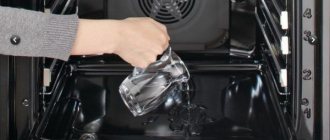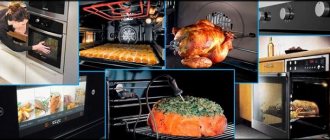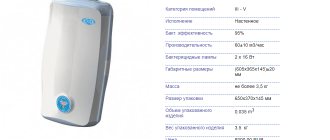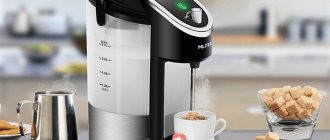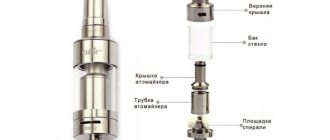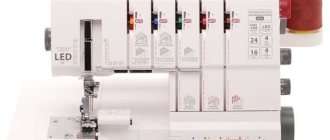Homemade dishes are always delicious because they are prepared with love. In a good oven, God himself ordered to cook delicious food: grilled chicken or baked meat with vegetables. Dinner is ready, but the oven is dirty. And you need to clean it right away, so as not to suffer with this process later.
Our parents are used to regular cleaning with detergents and a rag, but now there is pyrolytic oven cleaning. Not everyone knows what it is. But if your oven is equipped with it, it would be a sin not to take advantage of this feature, but more about everything.
Pyrolytic oven cleaning is
Not every oven has a pyrolytic cleaning system. She is rightfully considered the strongest and most aggressive. The essence of the procedure is to treat the surface with high temperature, at which the remaining food simply burns. Experts call this method full-type self-cleaning, since the housewife does not need to do any significant actions. Just turn on the desired mode, the temperature will reach almost 500 degrees. The cabinet door will be locked, so you can only view the process through glass.
pyrolytic cleaning function
is not available on all units. But recently, such home appliances are increasingly appearing on store shelves and are in demand among buyers.
Two titans that produce household appliances, namely Bosch and Gaggenau, have ovens with multi-level pyrolysis systems. Already at 300 degrees, only ash remains from the debris, and if you control it, you can seriously save on electricity, which is consumed quite a lot with a full-fledged cleaning program of this type.
Advantages
Reviews from housewives confirm the effectiveness and safety of pyrolytic cleaning. Buying a fairly expensive oven, which provides for the process of thermal decomposition of contaminants, is a justified step.
Positive points:
- the housewife will not have to spend a long time, with great expenditure of energy and nerves, to clean off stuck particles inside the oven;
- there is no need to use chemicals, cleaning products in the form of pastes and aerosols, which reduces the negative load on the skin and respiratory organs of the housewife;
- high quality of cleaning: pyrolysis (thermal decomposition) allows you to remove even stubborn dirt;
- the most persistent greasy stains, traces of mayonnaise and sauces easily disappear during thermal decomposition;
- even after 5 years of using the oven there is no need to replace the special filter;
- the buyer can purchase models of electric ovens (with pyrolysis function) in various colors and elegant designs;
- the process of operating a modern oven is practically no different from using simpler models;
- The safety rules are the same as when using ovens with catalytic cleaning, the only difference is in the temperature regime (with catalysis, the temperature reaches +200 C, during pyrolysis - up to +500 C).
Types of cleaning
In addition to the usual cleaning of ovens with detergents and a washcloth, there are other techniques that make life much easier. Let's look at the main ones:
- Pyrolysis.
If you use the oven infrequently, then washing it by hand is not a problem, but with regular use it becomes difficult. Thanks to the high temperature, all the rubbish will burn, and you only need to remove the ashes. Of course, this technique has its drawbacks, but the advantages are also obvious - perfect cleaning without much difficulty. It is important that the quality of such equipment is always above average. - Hydrolysis
. This type of oven cleaning is considered second after pyrolysis. In fact, this is an improved method of manual cleaning with detergents. The latter are mixed with water, poured into a container and a special mode is turned on. After turning off the oven, allow it to cool slightly and wipe the surface with a washcloth. The temperature range is from 50 to 100 degrees. Despite the fact that you will have to work with your hands, the steam will soften stubborn grease well, which will make cleaning much easier. - Catalysis
. Catalytic self-cleaning is available in many ovens, which are coated inside with a special compound that is slightly rough to the touch. It consists of cerium oxide, copper and manganese. The porous structure of the surface has tiny catalysts that help break down the fatty components of food residues. The temperature in this mode is low, since oxidation starts in the range of 150-200 degrees.
How has the function of pyrolysis changed over time?
Ovens with a pyrolysis function have evolved significantly since their inception. At the very beginning, models were produced that had 3 cleaning modes:
- Minimum – the fastest, for not too heavy dirt. It takes about 2 hours 15 minutes.
- Normal is the most popular mode, suitable for medium-difficult dirt. Duration - 2 hours 45 minutes.
- Intensive – for the most difficult cases, when a thick coating has formed on the oven walls. It is the longest - 3 hours 15 minutes.
The process itself is divided into the following stages:
- First, the oven is heated to a maximum temperature of 500°C (this takes less than an hour).
- The set temperature is maintained from one to three hours.
- Then the oven cools down.
Over time, manufacturers began to produce ovens, focusing on different consumer needs. Depending on how often housewives use this device, as well as what dishes they prefer to cook in it - vegetables or fatty meats - other cleaning modes have appeared. For example, the so-called “comfort pyrolysis”. It is more suitable for those who rarely use the oven and cook mainly various vegetable dishes or baked goods in it. The entire cleaning process is divided into two stages:
- The oven is preheated to 230°C. At this temperature, pre-firing takes place for the first 30 minutes.
- Then the temperature rises to 500°C, and more intensive cleaning begins, which lasts from one to three hours (depending on how dirty the oven is).
Later, ovens with a pyrolysis function began to be produced with a special catalytic filter, which contains an additional heating element. In such devices, the self-cleaning process proceeds as follows:
- Pre-firing.
- Pyrolysis at maximum temperature. In this case, the additional heating element heats up to 650°C. All organic contaminants that have accumulated in the filter are burned.
- The self-cleaning process ends after the filter has cooled down slightly.
Devices equipped with a catalytic filter are designed to save energy by quickly burning major contaminants.
There is another option for ovens that can significantly reduce power consumption during pyrolytic cleaning. Whirlpool the Sixth Sense sensor system. They capture carbon dioxide, which is released during the combustion of fat and other organic pollutants, and monitor its concentration. As soon as the oven walls are cleaned, the amount of carbon dioxide decreases and the appliance stops working. The pyrolysis process in such models lasts as long as it is really needed, without spending additional energy and time resources.
Pyrolytic oven cleaning system: advantages and disadvantages
Pyrolytic enamel in the oven with its resistance to high temperatures and the technique itself have their undeniable advantages:
- There is no need to disassemble the cabinet into its components, just remove the baking sheet and grill from it. And with traditional cleaning you can’t do without it.
- Burnt food remains turn into ashes that just need to be swept away. The effectiveness of the method is obvious.
- An electric built-in oven with pyrolytic cleaning will always be made with high quality and conscientiously so that it can withstand high temperature loads.
It also has disadvantages:
- Do you want pyrolysis? An oven with it will be quite expensive.
- During the active phase, an unpleasant burning odor is released, which requires the owner to have a good ventilation system.
- Not all furniture can withstand such high temperatures. Therefore, when purchasing such equipment, you need to find out how protected its walls are from temperature, since on average, furniture favorably tolerates long-term conditions only up to 7 degrees. Anything higher causes its damage and deformation.
- Most models do not have a telescopic component.
- A lot of electricity is wasted, which is also costly.
Pyrolysis: what are the energy costs?
On average, this procedure takes from 1.5 to 3 hours, during which the heating element operates at a maximum of 500 degrees, which affects power consumption.
An important fact is that such equipment must have a power cable, otherwise you risk burning the wiring and starting a fire. The cable power must be at least 6 kW to meet the needs of the pyrolysis cabinet.
Pros and cons
The pyrolytic type of cleaning is recognized as the most effective, but it is not without its drawbacks.
Let's look at all the pros and cons.
The advantage of pyrolytic cleaning is the following:
- after completion of the program, no manual cleaning is required;
- It is enough to run the program once a month (depending on the degree of contamination);
- throughout the entire period of operation there is no need to replace filters or panels (as with catalysis);
- there are no “dead” zones: all chamber walls are cleaned, including the inside of the door;
- the inner surface of the chamber does not require special care or purchase of cleaning products;
- The cleaning efficiency does not decrease over the years and does not depend on the degree of contamination.
As for the disadvantages, they are rather conditional:
- the high cost of ovens with pyrolysis (but here you need to understand that the price is also due to the high quality of the material and an improved protection system);
- release of an unpleasant burning odor (with regular use of the program it will be less pronounced, and a good exhaust hood can solve the problem);
- additional energy consumption (but no need to spend money on cleaning products);
- risk of burns (but burns can also be caused by an iron);
- an increase in the air temperature in the room (although during cleaning you can open the windows in the kitchen and go into the living room to watch a TV series).
Thus, we can say that pyrolytic cleaning has almost no disadvantages. Another question is whether it is available to you financially and whether you need it at all? Pyrolysis is convenient if you cook in the oven daily and a lot. With less frequent use, you can get by with catalysis. It is impossible to say unequivocally that catalytic or pyrolytic cleaning is better, since everything depends on the operating conditions. Also, do not assume that all expensive electric ovens have a pyrolytic cleaning program by default. There are many premium models with catalysis. At the same time, the presence of a pyrolytic cleaning system in the technical characteristics does not necessarily imply better functionality and super modern control.
Oven operation with pyrolysis: conditions
Most often, the baking sheets will have a special pyrolytic enamel, which is heat-resistant, which eliminates the need to wash the products separately. Particular attention should be paid to air circulation in the room, since combustion products in the cabinet will give off a persistent and dangerous odor. Therefore, the hood must work all the time while the procedure is in progress. Opening the window will not be enough. The furniture must be resistant to high temperatures, even though additional thermal insulation will be required during installation of the unit.
Interesting!
Such cabinets have protection that turns it off if the temperature exceeds the standard values.
A self-cleaning oven due to its high temperature requires careful handling and attention during the pyrolysis process. Heat-resistant glass on the door, an additional cooling system - this is not a reason to let everything take its course, always stay during the procedure to control the process. Keep an eye on your children, as with all of the above, you can still get burned.
How to clean an oven using pyrolysis
After purchasing a modern household appliance that includes a thermal decomposition reaction, the consumer should carefully study the instructions. High temperatures require precise fulfillment of requirements. Pyrolytic cleaning practically eliminates manual labor to remove contaminants from the bottom, walls, and oven doors: the housewife only needs to collect the dry matter and dispose of remaining contaminants without tedious cleaning of surfaces.
How does pyrolytic cleaning work:
- It is advisable to remove the grates and baking sheets from the oven: the parts can be processed in the dishwasher to remove fat from food residues. If the contamination is very strong, metal products can be left inside the oven so that the pyrolysis process can also process these elements;
- press the button or turn the knob to switch to the “Pyrolytic cleaning” mode. At the same time, the doors are locked for the safety of the housewife and household members. You can open the oven only after the process is completed and the temperature has dropped to less than +200 degrees;
- During the decomposition of particles, an unpleasant odor is released. To eliminate it, a special catch filter is provided inside the household appliance. Every 100 hours of operation, an important element self-cleanses, preventing the appearance of unpleasant “odors” in the oven and kitchen. Service center technicians advise additionally turning on the hood to completely eliminate the deterioration of the microclimate during pyrolytic cleaning;
- After the signal for permission to open the door, you need to remove the accumulated particles of dirt and grease using a damp cloth. Chemicals and detergents need not be used;
- After removing processed food particles, you need to return the baking sheets and racks to the oven;
- That's it, the process is complete: the walls, door, and top of the oven are completely cleaned.
READ ALSO: How to make cookies at home quickly and easily from available ingredients
The pyrolysis reaction and thermal decomposition of organic compounds takes from one and a half to two hours. Most of the time is spent heating and cooling the internal surfaces of the household appliance. The more grease and food particles that have accumulated, the longer the pyrolytic cleaning takes.
How to make strawberry jam in five minutes? Check out the step-by-step recipes.
Find out why condensation forms on the toilet tank and how to get rid of it in this article.
On the page https://poryadok-v-dome.com/sovety/kuhnya/kak-prigotovit-lazany.html read useful tips on how to prepare lasagna at home.
Step-by-step preparation for pyrolysis
Have you become the owner of an oven with pyrolytic cleaning from Bosch or another company? You need to start working with it by thoroughly reading the instructions and checking the functionality of all its systems. When the time comes for cleaning, the preparation procedure will need to be performed, focusing on the following steps:
- Anything in it that is not made of heat-resistant steel must be removed or disconnected.
- Close the door tightly.
- Turn on the desired mode.
- After five minutes of operation, turn on the kitchen hood at full power to remove the bad burning smell.
Pyrolysis: step by step procedure
After all the preparatory work has been carried out, you need to:
- If you have several pyrolysis modes, then you need to assess the degree of contamination of the oven and choose the optimal one, which will do everything efficiently, but also save energy.
- Once the temperature reaches 300 degrees, the door will automatically lock. This will prevent burns.
- The door will unlock only after the system is turned off and the temperature drops to 200 degrees. You need to open it and let the equipment cool completely.
- First, use a dry brush to sweep away the ash formed inside and only then wipe the surface with a damp sponge.
- We return the removed parts and removed baking sheets to their place. The oven is ready to go again, clean and beautiful.
Important!
It is recommended to carry out pyrolysis no more than once a week if you use the oven often, and in rare cases - immediately after cooking.
Modern ovens with pyrolysis are equipped with a number of additional, useful functions:
- automatic filter cleaning after 100 hours of operation;
- visual alarm indicating that the oven requires cleaning;
- “cleaning assistance” – detailed, step-by-step instructions on how to carry it out on the cabinet display;
- “C1” is a signal that the procedure cannot be started, since not all parts that are not resistant to heat have been removed from the oven.
What it is
Pyrolysis is a specific reaction that occurs at a temperature of about +500 degrees. When particles are actively heated, a powerful release of energy occurs, which triggers a certain process. Against the background of pyrolysis, molecules disintegrate on the walls of the oven, strong bonds are broken, and new substances are formed.
Thermal decomposition does not require the use of chemicals, there is no harmful effect on the environment and the human body.
A powerful reaction creates additional load on the power grid. Be sure to check the condition of the wiring and ground the outlet before purchasing an oven with a pyrolytic cleaning function.
Increasing the temperature inside the oven requires compliance with certain rules:
- Do not open the door during pyrolytic cleaning. The locking function prevents accidental contact with hot air and metal;
- To protect against overheating, the doors are covered with a special material;
- During the pyrolytic cleaning process, ash appears in the oven, consisting of burnt food particles. Dry matter can be easily removed with a sponge or soft cloth.
How to care for a cactus, how to water and propagate the plant? We have the answer!
How to remove moment glue from hands, clothes and plastic surfaces is written on this page.
Important details:
- The oven with pyrolysis function is made of durable, heat-resistant metal. There is also additional protection against excessive heating of external surfaces so that kitchen furniture and household appliances located nearby are not damaged;
- Many models are equipped with a special sensor that indicates the degree of contamination. The housewife can regulate the temperature during the cleaning process, select the optimal mode to save energy and time;
- the tangential door opening mechanism in combination with heat-resistant glass allows you to avoid accidental exposure of a person to critically high temperatures;
- Manufacturers recommend taking children away from the kitchen while the pyrolysis process is taking place. Despite the high-quality door lock, you should not risk the health of young fidgets who manage to cope with everything that should not be opened.
READ ALSO: What is a stewpan: what kind of food is the cookware suitable for cooking and how to choose the optimal model
How good are pyrolysis ovens?
If we compare them with cars, then these are premium Mercedes
. And we’re not just talking about the high cost of ovens with pyrolytic cleaning.
In order for them to function at full capacity, their quality must be very high, which means their service life is quite long.
The steel used for them is of the highest quality, which is not afraid of high temperatures of prolonged exposure. The interior of the oven is covered with heat-resistant enamel, and all components are high-tech items.
For example, an Electrolux oven with pyrolytic cleaning has 4 heat-resistant glasses that can easily withstand such a temperature load. Additionally, they are equipped with cooling systems for external surfaces.
Important!
The procedure must be carried out in the absence of children and pets in the room.
Safety of use is ensured by:
- automatic door locking systems;
- highly sensitive temperature and carbon monoxide sensors;
- a system that prevents the combustion of fatty deposits in the combustion chamber;
- grease absorption filters on the convector grille.
Modern appliances have a presentable and expensive appearance, which makes them a decoration for any kitchen. And it doesn’t matter whether it’s the cuisine of an expensive restaurant or homemade.
Costs and ventilation
Such equipment is not cheap, and energy costs are also considerable.
But you don’t need to be so categorical, because pyrolysis completely frees you from tedious hand washing, as well as the cost of detergents. But good and effective drugs are not cheap, and you need to buy them regularly. Due to the fact that this equipment is made conscientiously, it breaks down extremely rarely. Even all the filters installed on it come with a lifetime warranty.
Ventilation must be of high quality, and an open window is not enough. If you have enough money to buy such an oven, then you need to get a good hood in the kit. In this case, the unpleasant odor during pyrolysis will not bother you.
Benefits of Pyrolysis
- If we compare pyrolytic and catalytic oven cleaning in terms of efficiency, which is better, then the first one will win.
- There is no need to change the filter to eliminate unpleasant odors - it has a self-cleaning function.
- This cleaning method completely frees housewives from detergents and sponges; the process is as automated as possible.
- The entire surface is covered with a special substance from the inside, therefore, all the walls of the furnace are subject to pyrolysis.
- Pyrolysis easily copes with any kind of contaminants, even sugar and dairy products.
- The materials used are of very high quality: they can withstand enormous temperatures.
See also Corner sofa for the kitchen with a sleeping place. How to choose and arrange it correctly in the kitchen
Catalytic purification
It occurs immediately during the cooking process, so after the oven has cooled, you just need to wipe it with a damp sponge. To make the process easier, you will need to additionally install a filter to absorb fat.
Its advantages:
- this procedure can be carried out not only on electrical equipment, but also on gas equipment;
- no additional energy consumption;
- There is no need for total control over the process.
Minuses:
- the service life of the catalytic panel is 300 hours, then it needs to be changed;
- the better the original panels, the more expensive the oven will cost;
- not on all models the interior space is completely covered with catalysis.
What is better pyrolysis or catalysis
Often, when choosing such a technique, the question arises: “which cleaning is better, catalytic or pyrolytic.” Everyone chooses for themselves, but:
pyrolytic technology is more expensive, but nothing needs to be changed in it, as in catalytic technology;- in both cases there is no need to buy household chemicals;
- catalysis does not require additional energy consumption, since everything happens simultaneously with the cooking process;
- it does not require strong ventilation in the kitchen, unlike pyrolysis, in which this is a must;
- Cleaning after pyrolysis is better than after catalysis; according to reviews, with the latter, you will need to rub in some places to make the surface perfectly clean.
Of course, everyone decides for themselves what is best for them. But many are inclined to believe that if your oven will work frequently and intensively, then it is better to take expensive pyrolysis, which will pay for itself in the shortest possible time. And even the energy consumption will not be as noticeable as the fatigue from constantly cleaning the oven.
Reviews
Svetlana, Pskov
. We have a small cafe, I cook myself. When I had a regular oven, I had a terrible time cleaning it. My husband gave me a Siemens oven with pyrolytic cleaning; until now I didn’t know that this process could be so pleasant. I do it once a week at the end of my shift. And everything is clean, and I’m not tired.
Olga, Chelyabinsk
. Our godmother gave us such an oven, a German one. I probably cleaned it by hand for six months, I was still afraid. My husband got tired of it and we held it for the first time. When the smoke began to spread, I panicked, but my husband turned on the hood and opened the window. To say I was amazed at the end of the cleanse would be an understatement. There was just ashes on the baking sheet, which I swept away.
Irina Nikolaevna, Voronezh.
Good technology, but very expensive. Our chef bought it for the dining room. And after the first use, all the Soviet wiring burned out. They replaced it with a new one, and it’s very expensive, but the result, of course, is excellent - it swept away the ashes and that’s it. I wouldn’t buy one for home, I don’t cook much in the oven, and it uses a lot of electricity. This is beneficial for business, but not for home.

